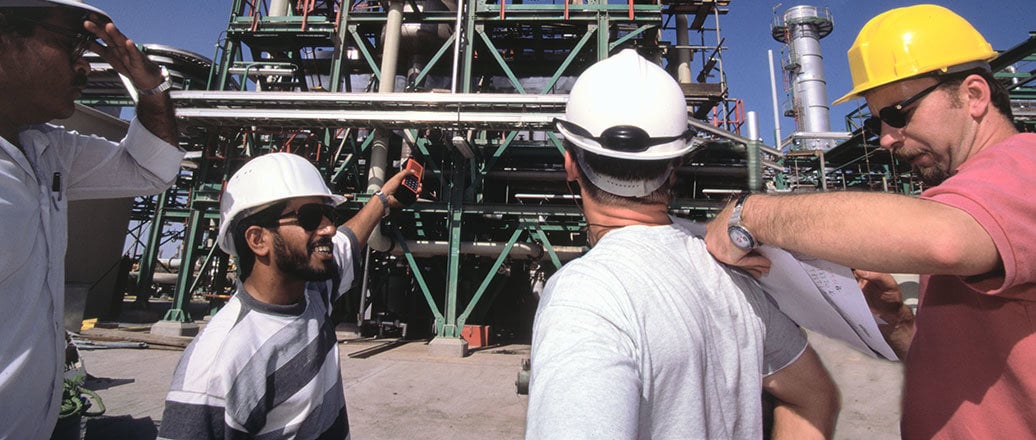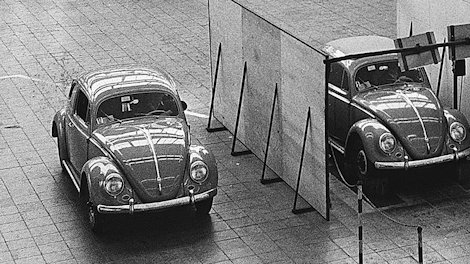Qatar wished to take part in the processing of its natural resources before export, and Hydro’s managing director at the time, Johan B. Holte, played an important role in establishing Hydro as partner in what was to be Qatar’s first industrial enterprise based on natural gas.
Qatar’s interest in industrial development led to several joint projects with Hydro. The plants use natural gas, which is produced together with crude oil (and was previously burned), for the production of ammonia. This again forms the basis for the production of urea, the most usual form of nitrogen fertilizer.
The first ammonia plant came onstream in Qatar at the end of 1973, and urea production started the following year. This was a success and it was not long before the decision was taken to double ammonia production capacity. Further expansions followed, with Hydro involved in each project.
Largest in the Middle East
Today the Qatar Fertilizer Company (Qafco) is the largest producer of mineral fertilizer in the Middle East. Urea production at Qafco’s production plant in Mesaieed, 40 kilometers south of the capital Doha, is now around 800,000 tonnes of granulated goods per year and 900,000 tonnes of prilled goods per year. Ammonia production is around 1.4 million tonnes per year. The gas used as raw material comes mainly from a gas-only field (North Dome).
Production at Qafco-4 – which is the latest expansion of the fertilizer plants – is planned to start in 2004. The volumes will then increase further.
Most of the company’s products are sent to markets in Asia, but Qafco has also started shipping to Australia, the US and Argentina.
Petrochemicals
Hydro’s involvement in Qatar has always been regarded as an important area of growth. It has boosted Hydro’s process of internationalization. It has also proved to be fortuitous in the light of the company’s long-term strategy of involvement in energy-rich areas, in addition to having provided the company with valuable experience, both technically and commercially.
Going to school in Qatar
It has to be said that once the decision was taken to take part in the first joint project in Qatar, Hydro went about it most thoroughly. Engineers recruited to work there would undoubtedly be taking their wives and children with them. And the children would need a Norwegian school to go to.
A chartered plane landed in Doha on 6 October 1971 with 21 adults and 26 children on board. The start of Hydro’s engagement in Qafco was also the start of the Qafco Norwegian School in Umm Said, just south of Doha.
Since then nearly 1,000 Norwegian families have lived in Qatar, often continuing for a second period. At the end of the seventies and the beginning of the eighties, there were around 100 pupils at the school in Umm Said. In recent years there have been around 30 pupils. There is also a pre-school and kindergarten for the younger children.
Updated: August 18, 2020








